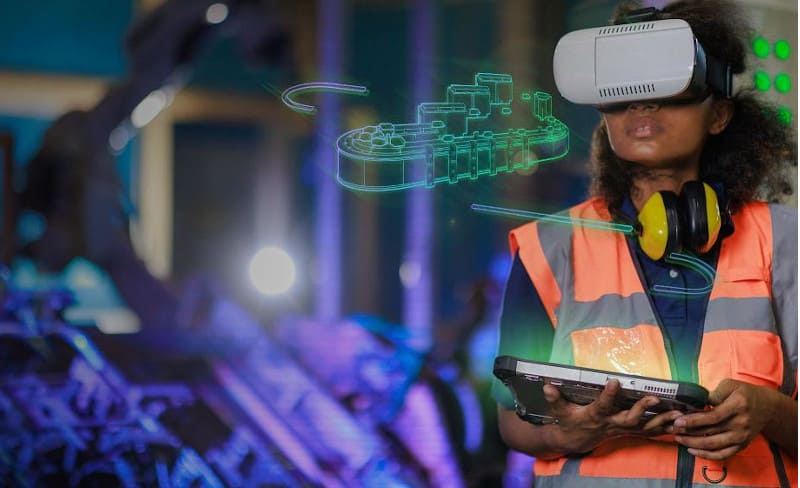At the SPS trade fair 2023, Schneider Electric will demonstrate the corporate sustainability effect. And shows how digital IoT technologies can be used to produce smarter, more climate-friendly and more economically.
At this year’s SPS trade fair, tech group Schneider Electric is represented with innovations in the areas of drive and control technology, robotics, energy distribution, software and services. In line with the business model, which is fully tailored to sustainable business, the company, which has around 4,700 employees in Germany, is presenting its solutions at a CO2-neutral exhibition stand. All technologies shown represent the systemic and integrative IoT approach that Schneider Electric pursues when it comes to digital transformation. This is characterized by the consistent merging of traditionally separate segments such as energy distribution, automation and software. Data on output volumes, cycle times, cleaning cycles or deliveries can be linked to energy consumption or CO2 emissions at a glance and evaluated in a consolidated manner. In this way, industrial companies are able to operate in a more climate-friendly and profitable manner.
Schneider Electric is even showing how this can be implemented in concrete terms with a showcase that is being shown publicly for the first time. The machine, developed together with the renowned KIT, converts semiconductors from discarded electrical devices live at the trade fair stand. Technically, this contribution to an industry characterized by sustainability and a circular economy is made possible by the interaction of AI image recognition and state-of-the-art robotics. The AI recognizes the chips and guides the robotics.
Synergy saves energy
“We now urgently need to find answers to current economic developments,” warns Jessica Bethune, who recently became head of Schneider Electric’s industrial business in Germany, Austria and Switzerland. “And there are so many promising approaches, especially in the areas of automation and digitalization. But they are not yet widely used! And I clearly see it as our duty as manufacturers. It is our job to increase the attractiveness of our solutions, particularly with regard to interoperability and scalability. This is the only way we can break out of classic sector thinking and develop truly practical solutions whose functionality is tailored to the actual requirements of our customers.”
Translated into Schneider Electric’s solution portfolio, this means, for example, that the company, together with its brands Aveva, Etap and ProLeiT, develops software applications that enable an integrated view of process events and energy flows. The manufacturer-independent data hub from Aveva and the line monitoring system LMS Life play a crucial role here. In order to further simplify the integration of OT and IT, the tech group relies on a completely manufacturer-independent automation approach without proprietary systems. This stipulates that hardware and software are no longer linked to one another in a manufacturer-specific manner, but that automated applications can be modeled in a software layer that is completely decoupled from the hardware. The Runtime Execution Engine from UniversalAutomation.Org is also used. Interoperability and data exchange are significantly simplified using this vendor-independent approach. In addition, completely new engineering freedoms are created for the development of more sustainable and energy-efficient systems.
Flexibility is a sustainability characteristic
When it comes to making machines and systems more economical and sustainable, flexibility also plays a crucial role. In many workshops, large amounts of energy and resources can be saved if even the smallest batch sizes can be produced economically. Schneider Electric has developed its multi-carrier solution for such demand-based and quickly convertible production. Here, objects can be transported between the process stations with individual cycle times and the highest precision. Switching to new production patterns and object formats is also possible at the push of a button.
Another highlight from the field of robotics is the new collaborative robot from Schneider Electric. Since upstream and downstream process steps can also be automated, the Lexium Cobot can be used to further increase the level of automation of machines and systems – both for new and existing machines. Collaborative robots are an important addition, especially in times of a shortage of skilled workers.
A question of efficiency
One area where Schneider Electric’s integrative approach particularly pays off is energy efficiency. As one of the world market leaders in terms of energy management, Schneider Electric is demonstrating at the SPS trade fair how it is usually possible to significantly improve the efficiency of automated systems using easily retrofitted digital technologies.
“It’s often not about turning everything upside down,” says Jessica Bethune. “But many things can simply be done smarter and better. A holistic approach based on digital networking often offers incredible synergy effects. Taking advantage of that is very low-hanging fruit in most businesses.”
For this purpose, Schneider Electric will be showing, among other things, measuring devices and panel servers at the SPS trade fair stand, with the help of which the transparency of energy flows can be easily increased in order to identify inefficiencies. In addition, new solutions for a reliable power supply and ensuring the highest network quality will be presented.

